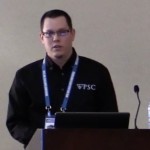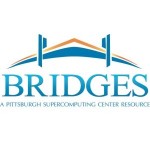“The Pittsburgh Supercomputing Center recently added Bridges to its lineup of world-class supercomputers. Bridges is designed for uniquely flexible, interoperating capabilities to empower research communities that previously have not used HPC and enable new data-driven insights. It also provides exceptional performance to traditional HPC users. It converges the best of High Performance Computing (HPC), High Performance Data Analytics (HPDA), machine learning, visualization, Web services, and community gateways in a single architecture.”
Live Report from LUG 2016 Day 2
In this special guest feature, Ken Strandberg offers this live report from Day 2 of the Lustre User Group meeting in Portland. “Scott Yockel from Harvard University shared how they are deploying Lustre across their massive three data centers up to 90 miles apart with 25 PB of storage, about half of which is Lustre. They’re using Docker containers and employing a backup strategy across the miles of every NFS system, parsing of the entire MDT, and includes 10k directories of small files.”
PSC Powers 3D-Reconstruction of Excitatory Visual Neuron Wiring
With help from the Pittsburgh Supercomputer Center, an international team of researchers has published the largest network to date of connections between neurons in the cortex, where high-level processing occurs, and have revealed several crucial elements of how networks in the brain are organized. The results are published this week in the journal Nature.
Intel® Omni-Path Architecture—A Next-Generation HPC Fabric
Even though it’s a new generation fabric, Intel OPA is still backwards compatible with the many applications in the HPC community that were written using the OpenFabrics Alliance* software stack for InfiniBand. So, existing InfiniBand users will be able to run their codes that are based on the OpenFabrics Enterprise Distribution (OFED) software on Intel OPA. Additionally, Intel has open sourced the key software elements of their fabric to allow integration of Intel OPA into the OFED stack, which several Linux* distributions include in their packages.
Anton 2 Supercomputer to Speed Molecular Simulations at PSC
Today the Pittsburgh Supercomputing Center (PSC) announced a $1.8-million National Institutes of Health grant to make the next-generation Anton 2 supercomputer developed by D. E. Shaw Research (DESRES) available to the biomedical research community. A specialized system for modeling the function and dynamics of biomolecules, the Anton 2 machine at PSC will be the only one of its kind publicly available to U.S. scientists. The grant also extends the operation of the Anton 1 supercomputer currently at PSC until the new Anton 2 is deployed, expected in the Fall of 2016.
Using OpenStack to Manage a Data Analytics HPC Cluster at PSC
“This talk will discuss the plans to use OpenStack to manage and automate dynamically changing an environment to provide users a highly re-configurable software environment with access to a large number of operating systems and software packages on the “Bridges system.” It will feature elements of OpenStack related to bare-metal booting, network provisioning, container management, storage, and scheduling nodes to match the workloads of the users.”
PSC’s Bridges Supercomputer Brings HPC to a New Class of Users
The democratization of HPC got a major boost last year with the announcement of an NSF award to the Pittsburgh Supercomputing Center. The $9.65 million grant for the development of Bridges, a new supercomputer designed to serve a wide variety of scientists, will open the door to users who have not had access to HPC until now. “Bridges is designed to close three important gaps: bringing HPC to new communities, merging HPC with Big Data, and integrating national cyberinfrastructure with campus resources. To do that, we developed a unique architecture featuring Hewlett Packard Enterprise (HPE) large-memory servers including HPE Integrity Superdome X, HPE ProLiant DL580, and HPE Apollo 2000. Bridges is interconnected by Intel Omni-Path Architecture fabric, deployed in a custom topology for Bridges’ anticipated workloads.”
Hewlett Packard Enterprise, Intel and PSC: Driving Innovation in HPC
In this video from SC15, Bill Mannel from HPE, Charlie Wuischpard from Intel, and Nick Nystrom from the Pittsburgh Supercomputing Center discuss their collaboration for High Performance Computing. Early next year, Hewlett Packard Enterprise will deploy the Bridges supercomputer based on Intel technology for breakthrough data centric computing at PSC. “Welcome to Bridges, a new concept in HPC – a system designed to support familiar, convenient software and environments for both traditional and non-traditional HPC users. It is a richly connected set of interacting systems offering a flexible mix of gateways (web portals), Hadoop and Spark ecosystems, batch processing and interactivity.”
Submit Your 2016 Research Allocation Requests for the Bridges Supercomputer
XSEDE is now accepting 2016 Research Allocation Requests for the Bridges supercomputer. Available starting in January, 2016 at the Pittsburgh Supercomputing Center, Bridges represents a new concept in high performance computing: a system designed to support familiar, convenient software and environments for both traditional and non-traditional HPC users.
PSC Brings Big Bandwidth to Eight Pennsylvania Schools
The Pittsburgh Supercomputing Center is using Comcast Business Ethernet for secure, private network connections to eight associated colleges.













